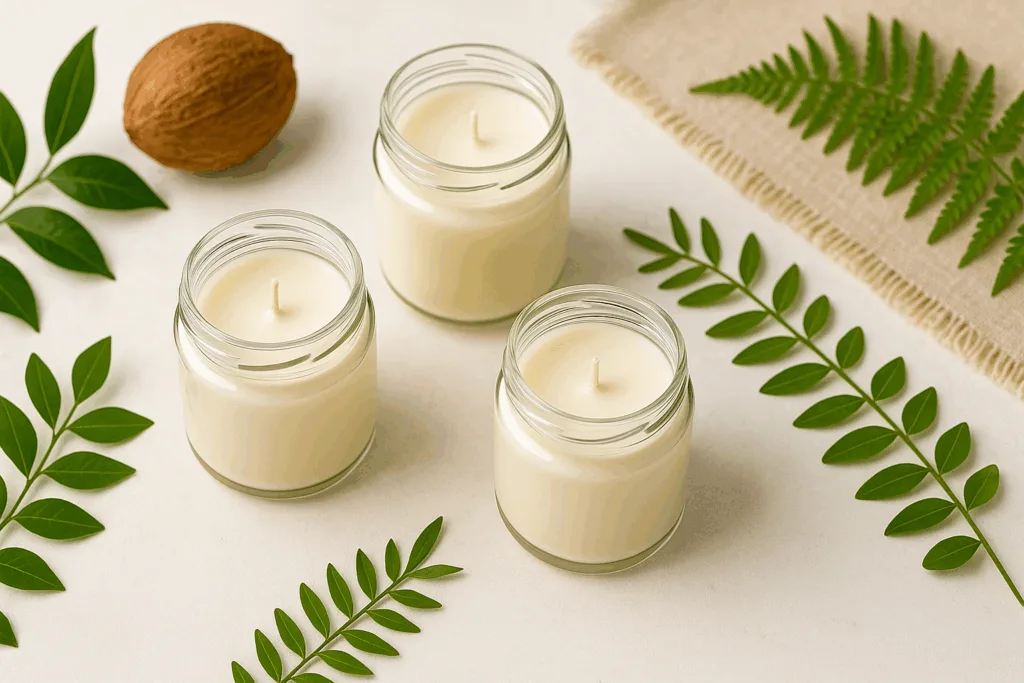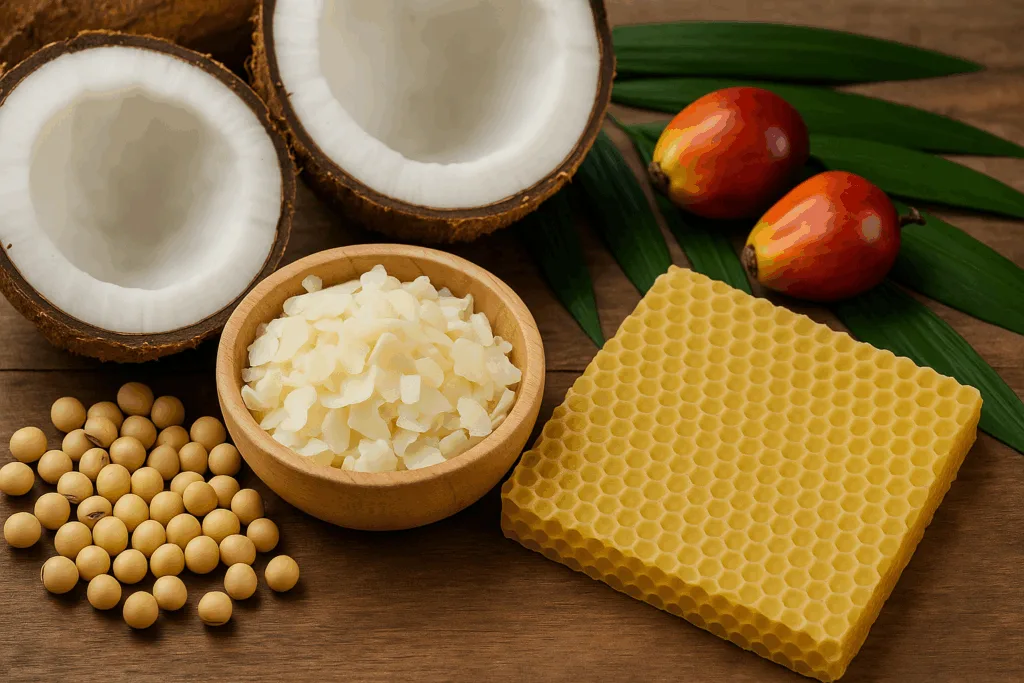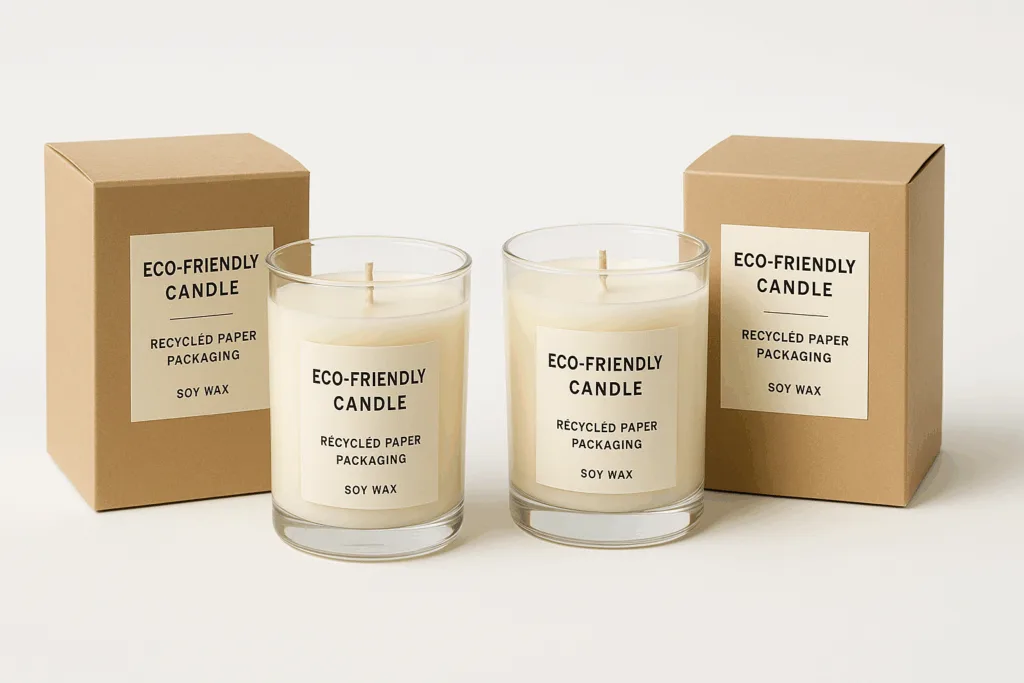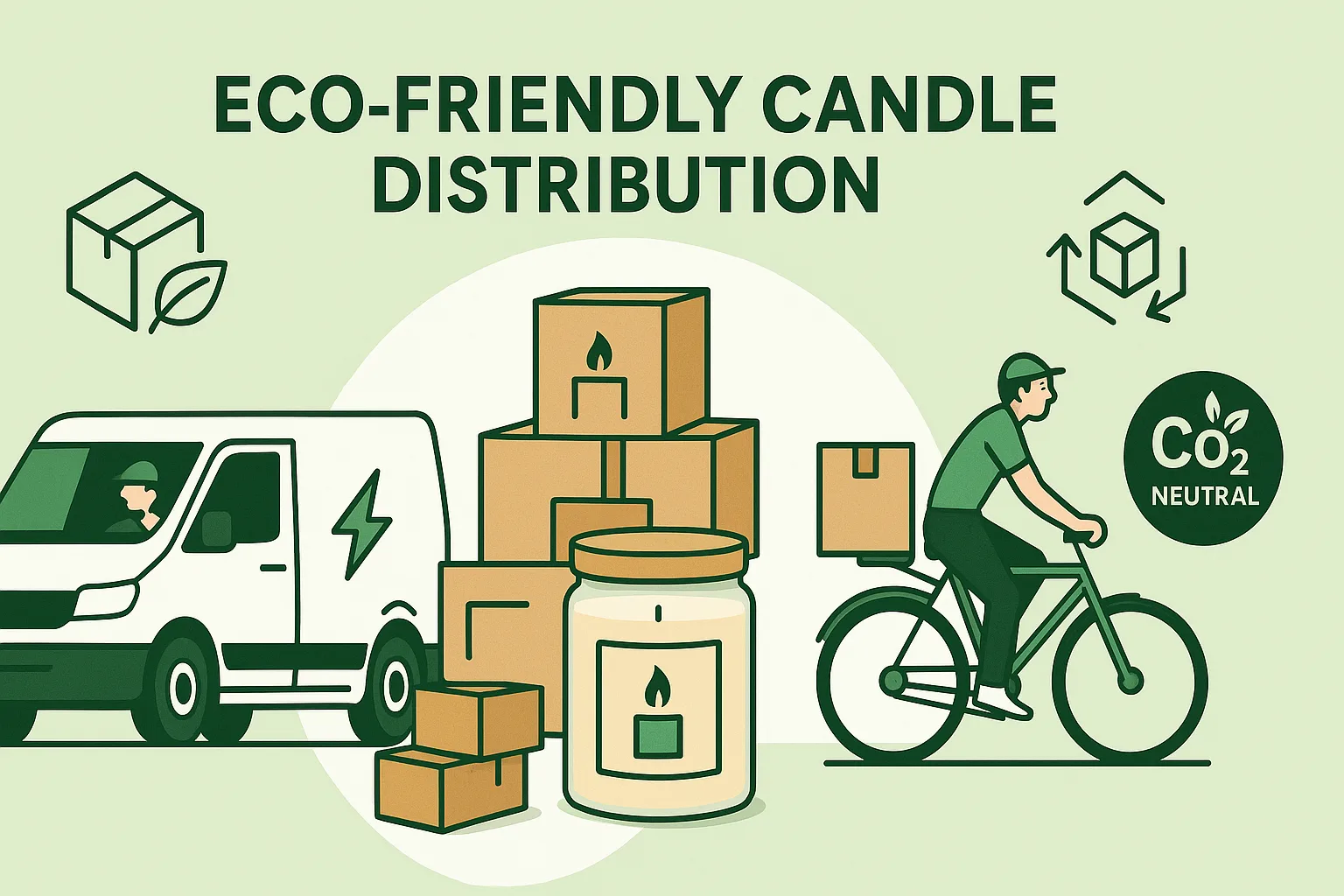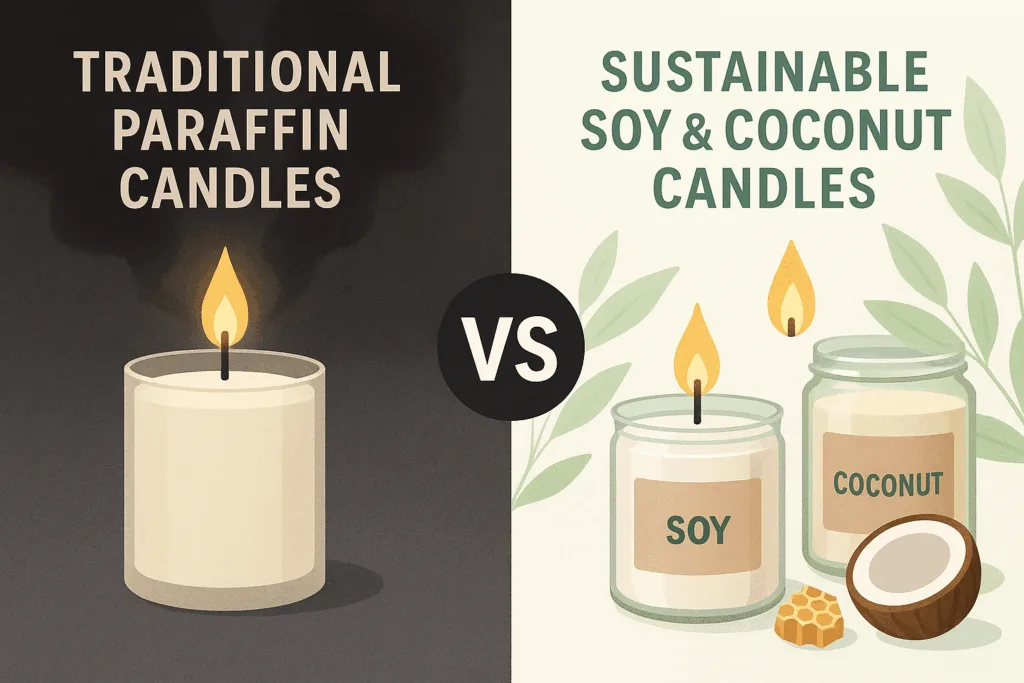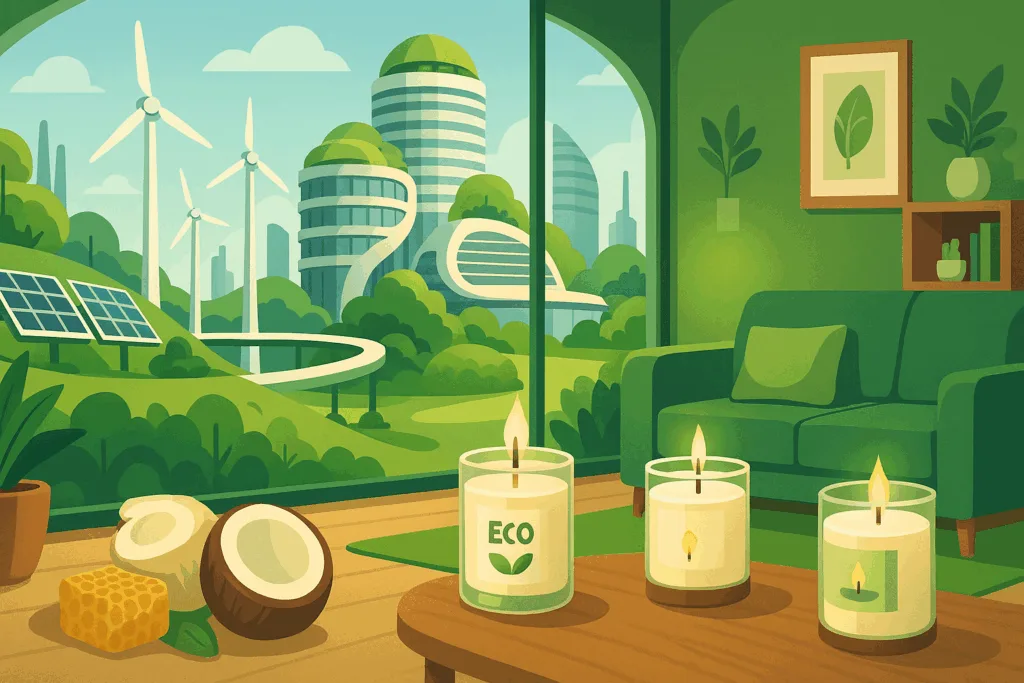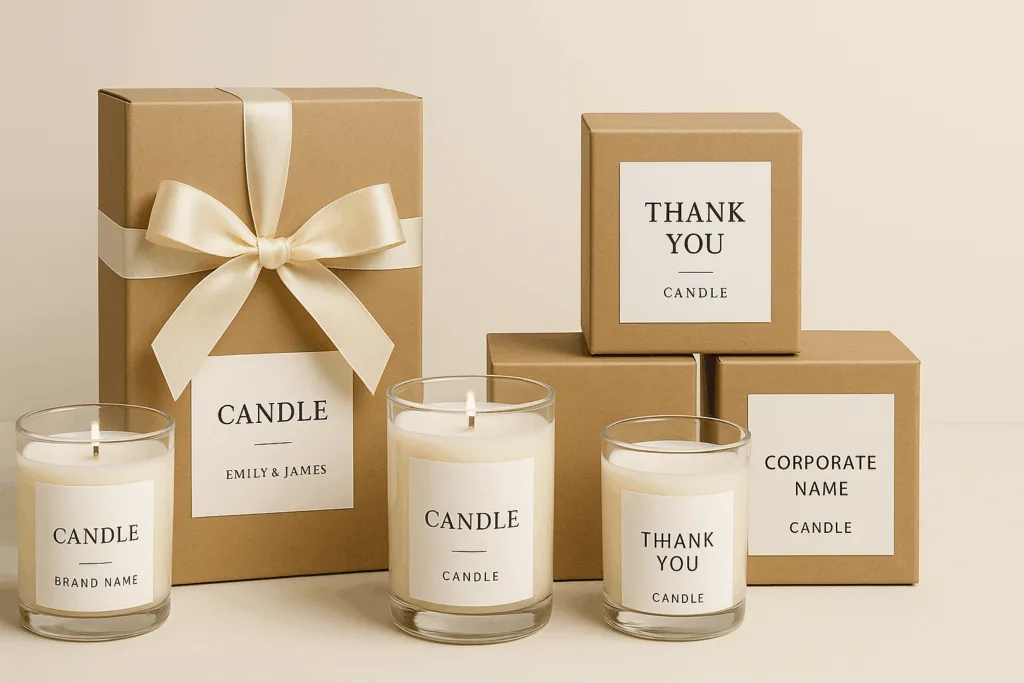The Evolution of Candle Manufacturing
Candles have illuminated human lives for centuries. In the early days, they were made primarily from tallow (animal fat), which had drawbacks such as unpleasant odors, smoke, and low burn quality. Over time, paraffin wax, a petroleum byproduct, became the most common choice due to its affordability and availability. However, paraffin candles raised environmental and health concerns because they release soot and rely on fossil fuels.
The evolution toward sustainable candle manufacturing reflects a larger shift in consumer awareness and corporate responsibility. Eco-conscious buyers are increasingly rejecting candles made with harmful chemicals in favor of natural alternatives. This movement has encouraged manufacturers like Circe Home to explore plant-based waxes, eco-friendly packaging, and energy-efficient production methods. By embracing sustainability, the candle industry not only reduces its environmental footprint but also creates products that are safer, healthier, and more meaningful for consumers.
Eco-Friendly Materials in Candle Making
Sustainable candle manufacturing begins with the right materials. Each component—from wax to fragrance to wick—affects both the burning experience and the environmental impact of the candle.
Plant-Based Waxes: Soy, Coconut, Beeswax, Palm (RSPO Certified)
Plant-based waxes are the foundation of eco-friendly candles. Soy wax, derived from soybeans, burns cleanly and lasts longer than paraffin. Coconut wax is prized for its smooth texture and excellent scent throw. Beeswax, one of the oldest candle materials, emits a natural honey aroma and helps purify the air while burning. Palm wax is another alternative, but its sustainability depends heavily on sourcing. Only candles made with RSPO (Roundtable on Sustainable Palm Oil) certified palm wax can ensure eco-responsibility, as this certification prevents deforestation and protects biodiversity.
Safe and Natural Fragrances
A candle’s fragrance is often what makes it irresistible. Yet many conventional candles use synthetic fragrances that contain toxins. Eco-friendly candle makers choose natural essential oils or IFRA-certified fragrance oils that meet strict safety guidelines. Essential oils like lavender, eucalyptus, and citrus not only smell delightful but also offer therapeutic benefits such as relaxation and stress relief. Choosing safe, non-toxic fragrances ensures a healthier indoor environment for consumers.
Eco-Friendly Wicks
Wicks may seem like a small detail, but they play a major role in sustainability. Traditional wicks sometimes contain metal cores, such as lead, which can release harmful substances. In contrast, eco-friendly candles use 100% cotton or wooden wicks. Cotton wicks are free from heavy metals, while wooden wicks produce a soothing crackling sound reminiscent of a fireplace. Both options support a cleaner burn and enhance the sensory experience.
Sustainable Packaging Solutions
Packaging is more than just a container—it represents the brand’s values. Sustainable packaging reduces waste and encourages reusability, aligning with eco-conscious consumer expectations.
Recycled and FSC Certified Paper
Using recycled paper or FSC (Forest Stewardship Council) certified paper ensures that packaging materials come from responsibly managed forests. By avoiding excessive plastic and opting for biodegradable paper, brands minimize landfill waste. FSC-certified paper also assures consumers that they are supporting ethical forestry practices.
Reusable Glass Jars & Metal Tins
Glass jars and metal tins are not only elegant but also durable. Once the candle is finished, these containers can be repurposed for storage, decoration, or DIY projects. Reusability extends the lifecycle of packaging and reduces demand for single-use materials.
Minimalist Design & Eco Inks
Sustainable packaging doesn’t need to compromise aesthetics. By adopting minimalist designs and using eco-friendly inks, brands can reduce chemical waste while appealing to modern tastes. Water-based inks and vegetable-based dyes provide safe alternatives that align with green manufacturing goals.
Green Practices in Production
Sustainability goes beyond materials—it includes how candles are produced. Manufacturers can make a significant impact by adopting greener processes.
Renewable Energy in Factories
Candle production often involves high energy consumption, particularly during wax melting. Switching to renewable energy sources like solar or wind power dramatically reduces a factory’s carbon footprint. Companies that invest in renewable energy demonstrate their commitment to a cleaner future.
Reducing Production Waste
Inefficient production can create unnecessary waste, from wax spills to excess packaging. By optimizing mold usage, improving pouring techniques, and recycling scraps, manufacturers minimize waste and conserve resources.
Energy-Efficient Machinery
Upgrading to modern, energy-efficient machinery is another step toward sustainability. High-efficiency wax melters and filling machines not only consume less power but also enhance production speed and consistency, making operations more sustainable and cost-effective.
Sustainable Transportation & Logistics
Even after candles are produced, sustainability remains important during shipping and distribution.
Localized Distribution Strategies
By setting up regional warehouses and prioritizing local delivery, brands can cut down on long-distance transportation and reduce carbon emissions. Local production and distribution also foster stronger ties with nearby communities.
Lightweight Packaging
Lightweight packaging reduces shipping weight, which directly lowers fuel consumption during transport. By carefully balancing durability with weight efficiency, brands can optimize logistics while maintaining product protection.
Carbon-Neutral Delivery Partnerships
Collaborating with logistics partners who offer carbon-neutral shipping options further reduces environmental impact. These programs often involve offsetting emissions by investing in reforestation or renewable energy initiatives.
Certifications & Compliance
Certifications validate eco-friendly claims and reassure customers that a brand is truly sustainable. Popular certifications and compliance standards include:
- FSC (Forest Stewardship Council): Ensures responsible paper sourcing.
- RSPO (Roundtable on Sustainable Palm Oil): Guarantees sustainable palm oil practices.
- ISO 14001: Recognizes effective environmental management systems.
- EU REACH & US FDA: Safety and chemical compliance standards.
- California Proposition 65: Protects consumers from harmful substances.
These certifications highlight a manufacturer’s commitment to environmental and consumer safety.
Brand Value & Consumer Trust
Sustainability is no longer just a trend—it’s a powerful driver of consumer choice. Eco-conscious buyers seek products that reflect their values. By embracing green practices, candle brands differentiate themselves in competitive markets. For B2B clients such as hotels, retailers, and corporate gift companies, working with sustainable suppliers enhances their ESG (Environmental, Social, and Governance) reputation. This creates a ripple effect where both brands and consumers benefit.
Comparing Traditional vs. Sustainable Candle Manufacturing
| Aspect | Traditional Candles | Sustainable Candles |
|---|---|---|
| Wax | Paraffin (petroleum-based) | Soy, coconut, beeswax, RSPO palm |
| Fragrance | Synthetic, sometimes toxic | IFRA-certified oils, essential oils |
| Wick | Metal core, may release toxins | Cotton or wooden wicks |
| Packaging | Plastic-heavy, non-recyclable | Recyclable, reusable, eco inks |
| Production | High energy, wasteful | Renewable energy, efficient processes |
| Logistics | Long-distance, high emissions | Local distribution, carbon-neutral shipping |
The Role of Consumers in Driving Sustainability
Consumers play a vital role in shaping the market. By choosing sustainable candles, they encourage brands to prioritize eco-friendly materials and practices. Simple actions such as repurposing candle jars, supporting certified products, and advocating for green initiatives amplify the impact of sustainable manufacturing.
Case Studies: Brands Leading in Sustainability
Several brands worldwide have become pioneers in sustainable candle manufacturing. They integrate eco-conscious materials, transparent supply chains, and community-focused programs. Circe Home stands among these leaders by emphasizing both environmental responsibility and luxurious quality. These success stories inspire other businesses to follow suit, showing that sustainability and profitability can go hand in hand.
Circe Home’s Commitment to Eco-Friendly Candle Making
At Circe Home, sustainability is at the heart of every product. From responsibly sourced soy and coconut wax to reusable packaging, every step reflects our dedication to a cleaner world. Our candles combine eco-conscious design with artisanal craftsmanship, offering a sensory experience that aligns with modern values. By prioritizing certifications, ethical sourcing, and transparent manufacturing, Circe Home ensures that customers can enjoy candles guilt-free.
Practical Tips for Choosing Sustainable Candles
- Look for natural waxes such as soy, coconut, or beeswax.
- Check for certifications like RSPO or FSC.
- Choose candles with cotton or wooden wicks.
- Prefer minimalist packaging made of recyclable materials.
- Support brands that use renewable energy in production.
These tips empower consumers to make informed decisions and contribute to a greener planet.
Future Trends in Sustainable Candle Manufacturing
The future of sustainable candles is bright. Innovations include biodegradable packaging, carbon-negative production methods, and digital tools for supply chain transparency. Advances in biotechnology may also introduce new plant-based waxes with unique burning properties. As consumer demand grows, the industry will continue to adapt and expand its eco-friendly offerings.
Conclusion
Sustainable candle manufacturing is more than a production method—it’s a philosophy that embraces environmental stewardship and consumer well-being. From eco-friendly materials to green logistics, every step matters. Circe Home exemplifies this commitment, proving that candles can bring warmth, beauty, and responsibility into homes around the world.
FAQ
1. What makes a candle truly sustainable?
A sustainable candle uses natural waxes (soy, coconut, beeswax), safe fragrances, eco-friendly wicks, and recyclable packaging. It is also produced using energy-efficient and low-waste methods.
2. Are eco-friendly candles more expensive?
While they may cost slightly more than traditional candles, eco-friendly candles offer better burn quality, longer life, and peace of mind knowing they are healthier and safer for the environment.
3. How can I repurpose candle jars?
Used candle jars can be cleaned and reused as storage containers, plant holders, or home décor pieces. This extends their life and reduces waste.
4. What certifications should I look for in sustainable candles?
Important certifications include FSC (paper), RSPO (palm wax), ISO 14001, EU REACH, FDA compliance, and California Proposition 65.
5. Why is paraffin wax not eco-friendly?
Paraffin is derived from petroleum, a non-renewable resource. It releases soot and chemicals when burned, which can impact both indoor air quality and the environment.
6. Can sustainable candles be customized for gifts or events?
Yes. Many eco-conscious brands, including Circe Home, offer custom labeling, fragrances, and packaging for corporate gifts, weddings, or special occasions.

